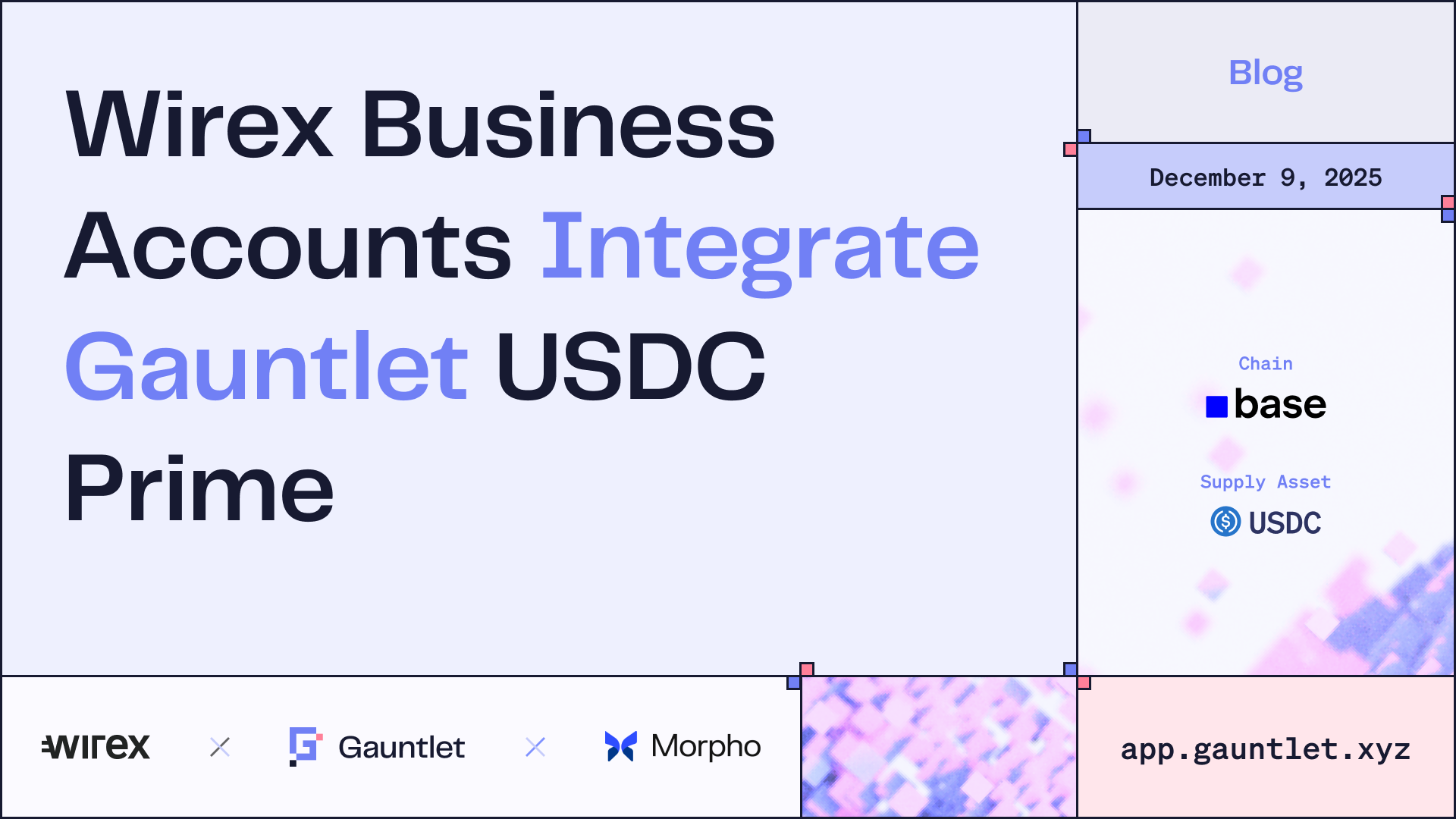Background on USDC
In October 2018, USDC was launched by Circle and Coinbase as a stablecoin on the Ethereum blockchain. To maintain a stable price of $1, USDC is backed by dollar assets held with US banks and custodians, including Silicon Valley Bank. Due to its size and backing by US institutions, USDC has been generally used as a reliable representation of US dollars in DeFi. In this role, about 35 billion USDC tokens are currently circulating on Ethereum and about 5 billion on other blockchains.
Because USDC is regarded as a high-quality collateral asset, it is widely integrated with many DeFi applications. On many lending protocols, USDC is among the most popular tokens for borrowing and collateral. Some other stablecoins also rely partially on USDC for backing. For example, about 4 billion USDC tokens are held as backing for DAI, making up over half of the DAI collateral pool.
Silicon Valley Bank Insolvency
On March 8, Silicon Valley Bank (SVB) announced that it intended to raise equity capital after incurring losses on the sale of investment securities. The negative market reaction to this announcement and subsequent drop in SVB’s stock price led to a depositor run on the bank. California regulators reported that on March 9, depositors sought to withdraw $42B, or about 24% of the bank’s Q4 2022 deposit base. The run exhausted SVB’s liquid assets and resulted in its insolvency and closure. In its role as receiver of insured banks, the FDIC then took over SVB to manage the disposition of assets and resolve outstanding claims. All insured deposits (balances below $250k) will be returned by March 13 as the first stage of resolution. In the near future, we expect a plan will be announced to liquidate the remaining assets of SVB and recover more value for depositors. While bank resolutions have often made depositors whole in the past, there is still much uncertainty around the timing and extent of future SVB recoveries.
Current State of USDC Backing
After the collapse of SVB, Circle announced that $3.3B of cash used as backing for USDC was held at the now-closed bank. Since the insured portion of these balances is likely minimal, about 8% of total USDC assets are now subject to the uncertainty of the SVB recovery process. Due to widespread demand to redeem USDC, Coinbase suspended convertibility outside US banking hours to manage the increase in cash turnover. The price of USDC dropped sharply on this news to under 90 cents overnight on March 10–11.

In later announcements, Circle committed to “stand behind USDC and cover any shortfall using corporate resources, involving external capital if necessary.” This may have reassured the market that significant losses to USDC backing are unlikely. However, the full path to recovery is still uncertain. As of this writing, the market price of USDC remains volatile and below $1, creating a number of unusual risks to DeFi markets. The remainder of this article will review these risks and possible steps to help mitigate further disruptions. We note that for most markets with USDC listings, temporarily pausing new USDC borrow and collateral positions can help contain the exposure.
Adverse Liquidations
Due to the past stability of USDC, it has been used as DeFi collateral with relatively high borrowing power compared to other assets. Some of these loans may breach collateral thresholds if the token’s price is not stable at $1. Usually, lending protocols can automatically liquidate unhealthy loans to reduce the risk of losses, but the case of USDC has some unique challenges here.
Counterintuitively, liquidations do not always make lending protocols safer. As detailed in OpenZeppelin’s Compound audit report, liquidations can sometimes even amplify risk. When a partial liquidation occurs, it should increase the collateral ratio of the liquidated account. However, liquidators must be offered a small share of the collateral as an incentive to participate. If the account’s collateral ratio is initially too low, the liquidation costs will push it further toward insolvency.

To quantify this, consider a liquidator that needs $55 worth of collateral to repay $50 worth of debt, keeping $5 as the incentive. In the first scenario shown above, the liquidation improves the collateral ratio of the account from 120% to 130%. On the other hand, in the second scenario, the account starting from a low collateral ratio of 103% becomes insolvent if partially liquidated. Since collateral ratios for USDC were relatively low to start, the drop in the token price created an environment for significant adverse liquidations.
To mitigate this risk, protocols may pause liquidations of USDC collateral until the price returns to $1 or reaches a stable discount. The tradeoff of a pause is that normal liquidations will not be possible. For protocols with limited borrowing of volatile assets against USDC, this might be a reasonable tradeoff in USDC downside scenarios. A longer-term solution to derisk the market would be lowering collateral factors and fine-tuning incentives, but such changes would take more time to implement via governance.
We initially recommended pausing USDC liquidations for some lending protocols with lower collateral ratios. For example, Aave v3 allows particularly low collateralization for stablecoin loans with stablecoin collateral in eMode, due to the close historical correlation in stablecoin prices. In the current environment where prices are no longer correlated, this feature may be prone to adverse liquidations. While the risk is not as acute now, we are ready to make Aave v3 recommendations on short notice based on:
- Current USDC price
- Modeled price trajectory of USDC
- Liquidity conditions
- Changing user positions
- Speed of governance controls
For protocols with higher collateral ratios, we are closely watching price levels where liquidation dynamics may become adverse. We will recommend pausing liquidations if these levels are hit.
USDC Liquidity Conditions
Some stablecoins, such as Tether’s USDT, hold their assets with other banks and were not directly impacted by the events at SVB. As uncertainty rose, traders rushed to swap USDC for stablecoins perceived as further from the risks. This demand depleted the liquidity of many decentralized exchanges (DEXs), making it more difficult to exchange USDC for other stablecoins. For example, the Curve 3pool, a popular trading venue for stablecoins, saw its available USDT drop to less than 10m from recent levels of well over 100m.

Extreme imbalances in on-chain pools created another unusual scenario for liquidation mechanics. Since prices for the USDT / USDC pair are fluctuating much more than usual, it may be favorable for active traders to perform liquidations instead of trading on an exchange. More specifically, a trader looking to exchange USDT for USDC now has the option to opportunistically liquidate USDT loans to claim USDC collateral. Depending on pricing and liquidation incentive, this may be rational for some traders, but from a protocol’s side, it may exacerbate risk. Opportunistic liquidations are not ideal for protocol health for several reasons:
- The USDC price drop could accelerate if the collateral is quickly sold elsewhere to lock in profit
- Opportunistic liquidations are most likely on USDC price drops that are unfavorable for the protocol
- Opportunistic liquidations do not help restore balance to USDC pools like buying on a DEX
In general, low liquidity conditions magnify the problems discussed in the previous section. When faced with disruptions in regular markets, rational participants may target protocols for adverse liquidations that further increase risk. This is another reason we recommended some protocols pause USDC liquidations until more stable pricing and on-chain liquidity are restored.
Other Stablecoins
As mentioned earlier, some stablecoins use USDC as a portion of their backing assets. When the price of USDC dropped, tokens with USDC exposure like DAI and FRAX followed closely. Though these stablecoins typically have more conservative collateral ratios than USDC, many of the same risks apply to some extent. In response to the events, DAI-issuer MakerDAO has taken steps to contain exposure to USDC and incentivize other collateral types. For lending protocols that list USDC-backed stablecoins, we recommend closely watching indirect exposure as well.

Price Oracles
To determine when an account is subject to liquidation, lending protocols use price feeds provided by on-chain oracle networks like Chainlink or Pyth. Since oracle price feeds can sometimes be manipulated, there is always a risk to using them as data sources for liquidation thresholds. Manipulation risk and the historical stability of USDC have led some protocols to hard-code its price to $1 within the protocol logic. In today’s conditions, it is inaccurate to use a fixed price for USDC. For example, a borrower providing 1 million USDC tokens would be seen as having collateral worth exactly $1m, while the market value may be volatile and considerably lower. We recommend a pause of all new borrows on affected protocols to mitigate the risk of the protocol mispricing USDC collateral.
Conclusion
The events of the last few days have been a shock to both traditional and DeFi markets. A major bank failure and subsequent impairment of a widely trusted stablecoin is an unprecedented and highly complex situation. This incident highlights the risks of DeFi markets integrating with centralized custodians who cannot always provide visibility on their assets in the same way as an on-chain environment. As Gauntlet works to deliver analysis and recommendations to our customers, we have provided tailored risk mitigation strategies for specific protocols. For example, our recommendations for Compound, Aave, Moonwell, and Venus were all different. We summarize these views to provide some clarity for the broader markets on the key issues. We will continue to monitor emerging risks and look forward to sharing more updates as conditions evolve.
Blog
View the full presentation
Read the full paper









